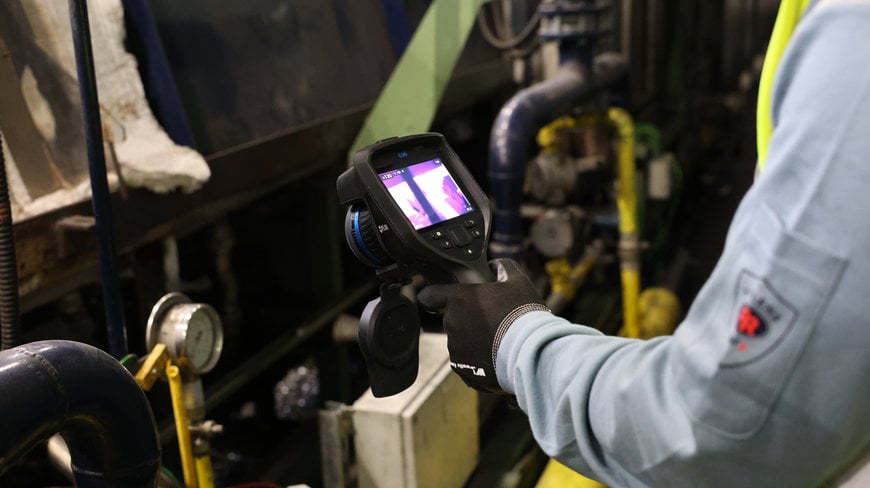Teledyne FLIR is Detecting Faults in Hydraulic Systems
At the heart of any hydraulic system is the pump. Although they vary in type and size hydraulic pumps are vital components, moving the fluid around the system, enabling rams to move within the cylinders.

The most common type of units used in industrial applications are either piston pumps or vane pumps. Both types are very susceptible to debris and impurities. In the case of a piston pump a small hole allows lubrication of the piston shoe as it rotates around the swash plate. If the hole gets blocked then the shoes quickly wear and a tell-tale sign is the generation of heat as the friction increases. Vane pumps are equally susceptible to deposits as the individual vanes fail to move freely within the barrel, once more increasing friction and associated heat. Pump failure can result relatively quickly when oil starvation occurs, causing the whole system to fail. For this reason and changes in pump temperature must be taken seriously and acted upon as soon as they are identified.
The issue most maintenance engineers face is detecting when a pump is running abnormally hot. Many hydraulic pumps are in areas difficult to access and are therefore not regularly checked. In most pump failures, it’s only when the whole system goes down that problems are manifest, bringing production to a standstill until a replacement pump is identified and fitted.
FLIR are a global company well known for their research and production of high-quality thermal imaging cameras. The latest cameras that form part of the Exx-Series are capable of detecting heat abnormalities in components such as hydraulic pumps from several meters away (or tens of metres away with the right lens), meaning those hard-to-reach areas can be analysed allowing remedial action to be taken thus avoiding costly pump failure and the associated production downtime.
Whether it’s hydraulic pumps, industrial gearboxes, compressors, turbines or other units that have the potential to emit heat in the event of abnormalities, the Exx-Series of thermal imaging cameras from FLIR can prove to be invaluable analytical tools. Through regular analysis a temperature profile is obtained such that any rise in temperature indicates wear problems and maintenance required. Some cameras in the series allow for interchangeable lenses bringing into focus those more distant components.
But it is not just the camera hardware that is impressive. The instruments are supported by FLIR-patented MSX (Multi-Spectral Dynamic Imaging) enhancement. The cameras provide the ability organise images and to add detailed notes directly from the large touch screen incorporated on the camera. Images can then be directly uploaded to the cloud with storage space provided by FLIR and termed FLIR Ignite. This provides convenient and easy access from any device. When you’re ready to share images and create client reports, your images and notes are already available for your use in FLIR Ignite or FLIR Thermal Studio for the most streamlined experience.

Less experienced operators can make the most of the FLIR Exx-Series of thermal imaging cameras by following a prescribed inspection route pre-loaded into the camera’s on-board software entitled FLIR Inspection Route. This allows engineers with less experience of your plant to carry out a large survey in a logical sequence providing management with a detailed report of the manufacturing process.
To find out more about the possibilities of thermal imaging in condition monitoring or simply want to know more about the FLIR software available to improve your operation efficiency visit www.flir.com or contact your local FLIR agent of distributor.
Author: Darrell Taylor

